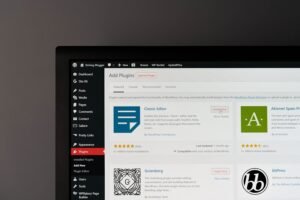Understanding the user journey is crucial for any business, especially in the travel and hospitality industry. It involves mapping out the steps a user takes from the moment they start thinking about a trip to the moment they return home. This includes everything from researching destinations and accommodation options to booking flights, hotels, and activities, as well as post-trip feedback and reviews. By understanding the user journey, businesses can identify pain points and opportunities for improvement, ultimately leading to a better user experience and increased customer satisfaction.
One way to understand the user journey is by creating user personas, which are fictional characters that represent different types of users based on their demographics, behaviours, and needs. By creating these personas, businesses can better understand the motivations and pain points of their target audience, allowing them to tailor their products and services to better meet their needs. Additionally, businesses can use tools such as customer journey mapping to visualise the steps a user takes throughout their journey, helping them identify areas for improvement and innovation. By understanding the user journey, businesses can create a more seamless and enjoyable experience for their customers, ultimately leading to increased loyalty and repeat business.
Simplifying the Booking Interface
Simplifying the booking interface is essential for providing a seamless and enjoyable user experience. A cluttered and confusing booking interface can lead to frustration and abandonment, ultimately resulting in lost sales and dissatisfied customers. To simplify the booking interface, businesses should focus on clear and intuitive design, streamlined processes, and minimalistic layouts. This includes using clear and concise language, intuitive navigation, and visual cues to guide users through the booking process. Additionally, businesses should minimise the number of steps required to complete a booking, as well as reduce the amount of information and options presented to users at any given time.
One way to simplify the booking interface is by implementing a single-page checkout process, which allows users to complete their booking without having to navigate through multiple pages. This not only reduces friction and frustration but also speeds up the booking process, ultimately leading to higher conversion rates. Additionally, businesses should focus on responsive design, ensuring that their booking interface is optimised for all devices, including desktops, tablets, and smartphones. By simplifying the booking interface, businesses can provide a more enjoyable and efficient user experience, ultimately leading to increased sales and customer satisfaction.
Integrating Payment Options
Integrating payment options is crucial for providing a convenient and flexible booking experience. Different users have different preferences when it comes to payment methods, so businesses should offer a variety of options to accommodate their diverse customer base. This includes traditional methods such as credit and debit cards, as well as alternative options such as digital wallets, bank transfers, and even cryptocurrency. By offering a wide range of payment options, businesses can cater to the needs and preferences of their customers, ultimately leading to increased conversion rates and customer satisfaction.
One way to integrate payment options is by partnering with multiple payment service providers, allowing businesses to offer a variety of options without having to manage multiple integrations themselves. Additionally, businesses should focus on providing a secure and trustworthy payment experience, which includes implementing robust security measures such as encryption, tokenisation, and fraud detection. By integrating payment options, businesses can provide a more convenient and flexible booking experience for their customers, ultimately leading to increased sales and loyalty.
Utilising Automation and AI
Utilising automation and AI can help streamline processes and provide a more personalised experience for users. Automation can be used to handle repetitive tasks such as sending confirmation emails, processing payments, and managing inventory, freeing up staff to focus on more complex and high-value activities. Additionally, AI can be used to provide personalised recommendations based on user preferences and behaviour, ultimately leading to a more tailored and relevant experience for users. By utilising automation and AI, businesses can improve efficiency, reduce costs, and provide a more engaging experience for their customers.
One way to utilise automation is by implementing chatbots, which can handle customer inquiries and support in real-time without human intervention. Chatbots can provide instant responses to common questions, guide users through the booking process, and even make personalised recommendations based on user preferences. Additionally, businesses can use AI algorithms to analyse user data and provide personalised recommendations for destinations, accommodation options, and activities. By utilising automation and AI, businesses can provide a more efficient and engaging experience for their customers, ultimately leading to increased satisfaction and loyalty.
Optimising Mobile Booking
Optimising mobile booking is essential in today’s digital age, as an increasing number of users are using smartphones and tablets to research and book travel-related services. Businesses should focus on providing a seamless and intuitive mobile booking experience, which includes responsive design, fast loading times, and simplified processes. This includes optimising forms for mobile input, minimising the number of steps required to complete a booking, and providing clear calls-to-action that are easy to tap on small screens. By optimising mobile booking, businesses can cater to the needs of their mobile users, ultimately leading to increased sales and customer satisfaction.
One way to optimise mobile booking is by implementing mobile-specific features such as geolocation services, which can provide users with relevant information based on their current location. This includes showing nearby accommodation options, activities, and attractions, as well as providing real-time updates on availability and pricing. Additionally, businesses should focus on providing a seamless cross-device experience, allowing users to start their booking on one device and continue it on another without losing any progress. By optimising mobile booking, businesses can provide a more convenient and enjoyable experience for their mobile users, ultimately leading to increased sales and loyalty.
Providing Clear and Concise Information
Providing clear and concise information is crucial for helping users make informed decisions when booking travel-related services. This includes providing detailed descriptions of destinations, accommodation options, activities, and amenities, as well as transparent pricing and policies. Businesses should focus on using clear language that is easy to understand for all users, as well as providing visual aids such as photos, videos, and maps to help users visualise their options. Additionally, businesses should provide transparent information about fees, taxes, cancellation policies, and other important details that may impact a user’s decision-making process.
One way to provide clear and concise information is by implementing interactive tools such as comparison charts or calculators that allow users to easily compare different options based on their preferences and priorities. Additionally, businesses should focus on providing real-time updates on availability and pricing to ensure that users have accurate information when making their decisions. By providing clear and concise information, businesses can help users make informed decisions that meet their needs and expectations, ultimately leading to increased satisfaction and loyalty.
Seeking User Feedback and Iterating
Seeking user feedback is essential for understanding the needs and preferences of customers and identifying areas for improvement. Businesses should actively seek feedback from users at various touchpoints throughout their journey, including before booking (e.g., during research), during the booking process (e.g., after completing a transaction), during their trip (e.g., through surveys or reviews), and after their trip (e.g., through post-trip feedback). By seeking user feedback at these various touchpoints, businesses can gain valuable insights into the user experience at each stage of the journey, ultimately leading to better-informed decisions and continuous improvement.
One way to seek user feedback is by implementing surveys or feedback forms that are easy for users to access and complete. Businesses should also actively monitor online reviews and social media channels for feedback from users who may not have participated in formal surveys. Additionally, businesses should use feedback analytics tools to analyse trends and patterns in user feedback data, helping them identify common pain points or areas for improvement. By seeking user feedback and iterating based on this feedback, businesses can continuously improve their products and services to better meet the needs of their customers, ultimately leading to increased satisfaction and loyalty.
In conclusion, understanding the user journey is crucial for providing a seamless and enjoyable experience for customers in the travel and hospitality industry. By simplifying the booking interface, integrating payment options, utilising automation and AI, optimising mobile booking, providing clear and concise information, seeking user feedback, and iterating based on this feedback, businesses can create a more efficient and engaging experience for their customers. Ultimately, this leads to increased sales, customer satisfaction, loyalty, and long-term success in an increasingly competitive market.




